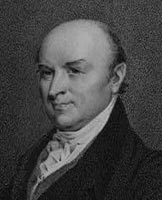 |
||
  |
||
|
|
The 1828 Campaign of Andrew Jackson: Expansion of the Voting BaseLesson One of the Curriculum Unit: The 1828 Campaign of Andrew Jackson and the Growth of Party PoliticsGuiding Question
Learning ObjectivesAfter completing this lesson, students will be able to:
(NOTE: Though it's not the focus of this lesson, students should be aware that some segments of the population were actively excluded from voting during this same period. Share the excerpt from the New Jersey constitution of 1776, included in the handout. Have students read it carefully. Who could vote? Any resident worth 50 pounds-including African Americans and women, who voted in some early elections. Now read the act of 1807. It took the vote away from everyone but white males worth 50 pounds. When the financial requirement was finally dropped in 1844, only white males continued to be specified. So at the same time the right to vote was being expanded for white males, it was narrowing for others.) There were differences from state to state in the franchise changes. Some states that dropped property requirements continued a tax payment requirement, for example. Others, like Vermont and some of the frontier states (for example, Ohio and Indiana), never had property requirements for white males. It should be noted, as well, that in the earliest elections, electors for president had been chosen by state legislatures. But by 1828, all but two states were choosing electors for president through a popular vote. Therefore, not only were more white males allowed to vote, but that vote also had a direct effect on the outcome of presidential elections.
(NOTE: Information about the Electoral College and the presidential election of 1824 is contained in the complementary EDSITEment lesson The Election Is in the House: The Presidential Election of 1824. See the third bulleted item in the section Preparing to Teach This Curriculum Unit, above.)
Look at the following list of hypothetical people living in the U.S. in 1828. Identify whether each individual would probably have been enfranchised after 1800, disenfranchised since 1800, or enfranchised previous to 1800. Help the students think about the likely differences in the concerns of each that might affect voting, if s/he had the franchise:
|
||||||||||||||||||||||||||||||||||||||||||||||||||||||||||||||||||||||
  |
||
| EDSITEment contains a variety of links to other websites and references to resources available through government, nonprofit, and commercial entities. These links and references are provided solely for informational purposes and the convenience of the user. Their inclusion does not constitute an endorsement. For more information, please click the Disclaimer icon. | ||
| Disclaimer | Conditions of Use | Privacy Policy Search
| Site
Map | Contact
Us | ||
